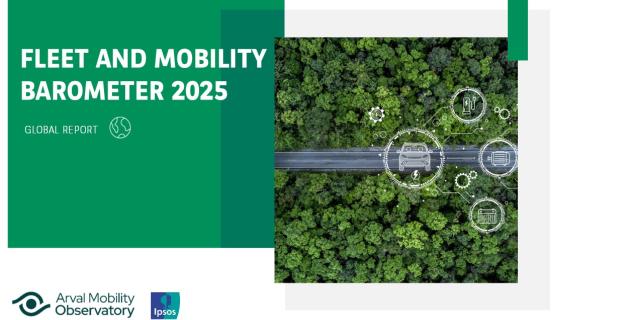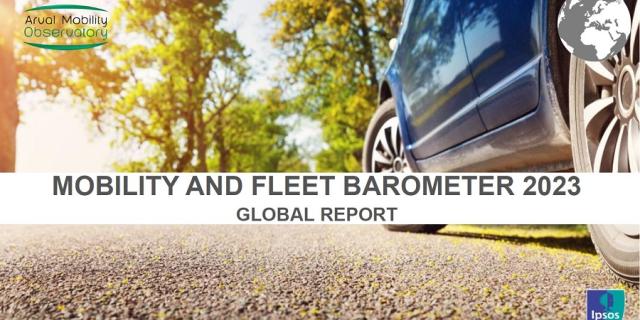How eLCVs perform in Real World?
While business interest in electric cars has increased exponentially in the last year or so, progress in the electric van market has been much slower. However, there are signs that this situation is beginning to change – a trend that Arval is hoping to encourage with the release of an authoritative new report.

“eLCVs: Electric Fleet Transitions Powered by Real World Data” is perhaps the first authoritative and independent study to look at the performance of a selection of electric light commercial vehicles in everyday working conditions, including essential information on how factors such as payload and temperature can affect range.
We spoke to Shams-Dine El Mouden, Arval’s International Consulting Director and Jean Mateos, Arval’s Head of LCV, about the new document.
This is a very impressive piece of research. What prompted you to look into this area?
Jean: “When we speak to customers about eLCVS – electric light commercial vehicles - they normally raise two main concerns. They are worried about range and they are worried about charging.
“More specifically, they are concerned about how these issues will be tackled in the real world. It is widely recognised that there is a sometimes sizeable gap between WLTP range figures and what is achievable with an eLCV in normal use.”
Shams: “This is very much why we produced the white paper. It is about providing an independent investigation to show the kind of performance that operators can genuinely expect from eLCVS. It’s information that fleet operators really need to be able to plan their electrification strategies.”
Were the results in line with you expectations?
Jean: “Yes, given our operational experience of eLCVS and electric vehicles generally. The results suggest that in most normal operating conditions for different sizes of van, range will be somewhere between 60-70% of the official WLTP figures provided by manufacturers, dependent on payload and temperature.
“The important point here is that, even at this 60-70% level, these vehicles will still meet the needs of the vast majority of fleet operators, if they are returned to depot and charged overnight, which we believe will be the norm. Therefore, the worries about range and charging that we are encountering are largely unfounded.”
Shams: “It is important to note that the primary research was done in the UK, in quite low temperatures, so the findings in the white paper represent something close to a worst case scenario. If you are a van operator in Spain or Portugal, you can confidently expect better results than these.”
What do you see as the biggest hurdles for fleet operators to overcome in terms of eLCV adoption?
Jean: “As the report shows, the real world concerns about range and charging can be set aside, so the big shift is really cultural. Van operators hate “not-planned” immobility. Their vehicles are tools, which have to make money, when moving as required (and they spend a lot of time in motion). However, using diesel power, fleets have become accustomed to acquiring the range they need by refuelling quickly on an as-needed basis. Simply being comfortable with the different usage and charging patterns of eLCVs requires a change in mindset. Once that is achieved, everything else follows.”
It is noticeable that there is a much wider range of eLCVs becoming available? How important is this?
Jean: “It is a crucial element in fleet adoption. There are now vehicles available from the historical manufacturers that are suitable for a sizeable range of applications and interestingly, new manufacturers from the US, UK and China are entering the “juicy”market. This type of healthy competition should improve the products and mean better options for fleets.”
What do fleets need to be doing now to prepare for van electrification?
Shams: “In terms of planning, fleets that are looking to create an electrification strategy for their van fleet really need to audit their current operations in terms of the vehicles that they are using and the ways in which they are used. If you just simply try to substitute an eLCV for a diesel van on a like-for-like basis, that will almost certainly be a failure. You really need to have an in-depth understanding of your fleet.
“Our thinking is that this whole process, which Arval can fully support through our consultancy resource, is very much an opportunity to make general improvements across your operations. It is not just about finding ways to integrate eLCVs but taking a top-to-bottom look at your fleet and identifying new ways of making all kinds of other improvements at the same time as dramatically cutting emissions.”
How quickly do you think electrification will take place?
Jean: “The truth is that the current picture varies quite a lot from country-to-country in terms of the vehicles available, the charging infrastructure, and the incentives put in place by government. Not everyone is moving at the same speed.
“However, our general view is that diesel will remain the core motive power for LCV fleets for at least the next few years but, by the end of the decade, the small-medium van sector will be largely electrified. There is also likely to be a move towards hydrogen power for large vans, with technology making its way down from the truck sector.”
What would you hope that fleet operators learn from your report?
Shams: “Simply that, when it comes to the vast majority of applications that vans are used for in 2021, eLCVs provide more than adequate range today in real world conditions. While it requires something of a change in thinking on the part of operators, a structured approach to electric van adoption will undoubtedly be successful.”











